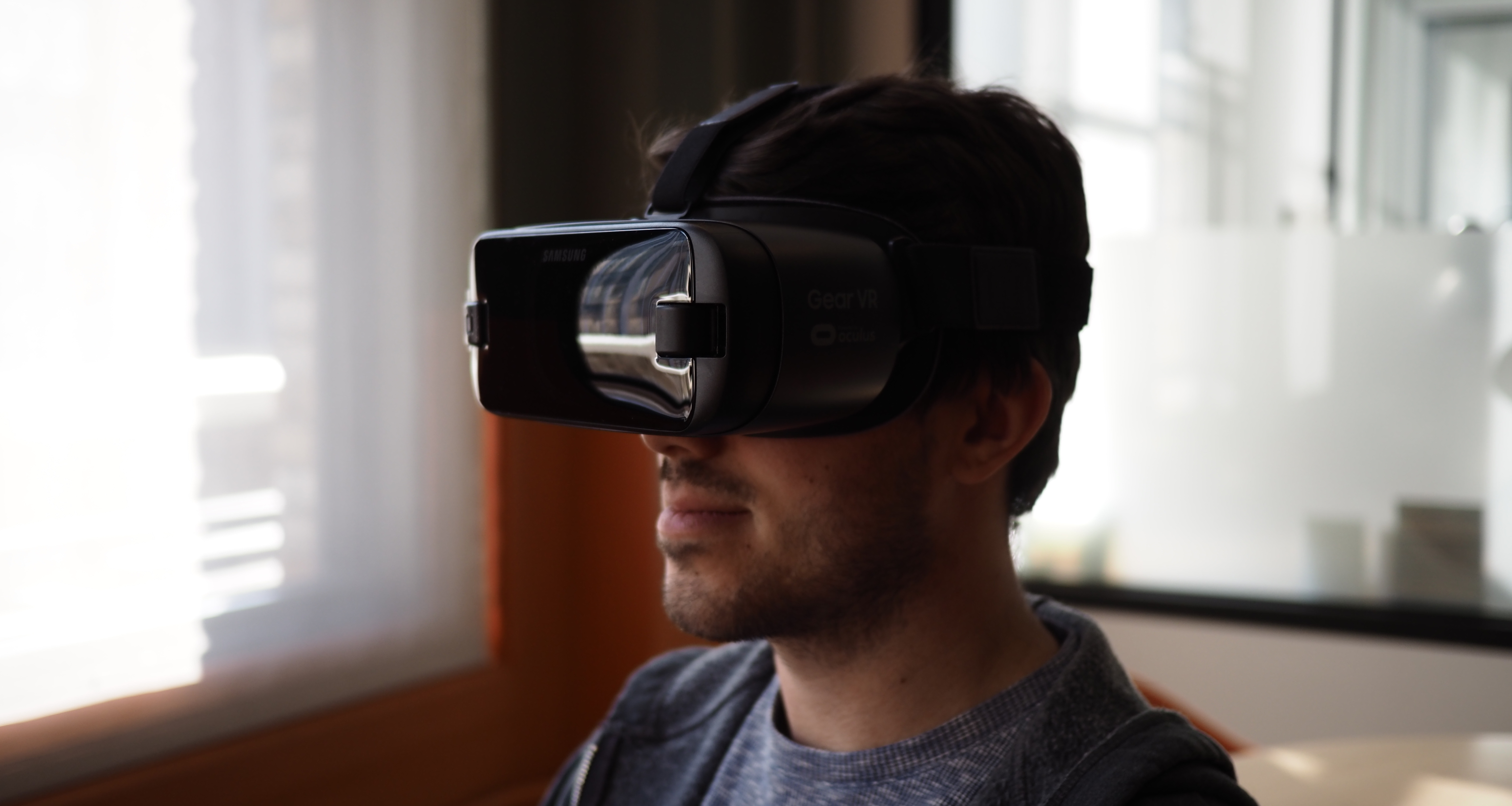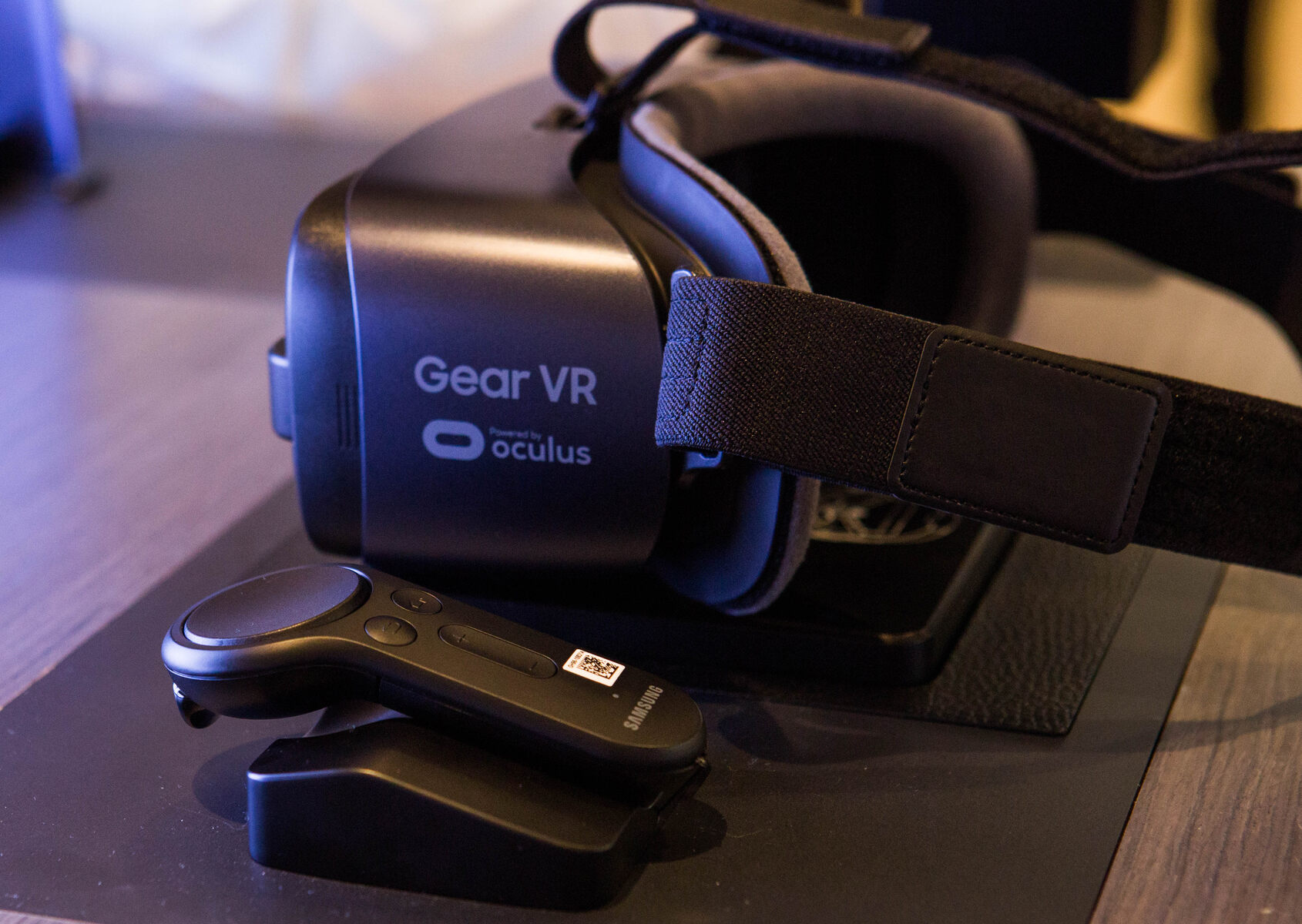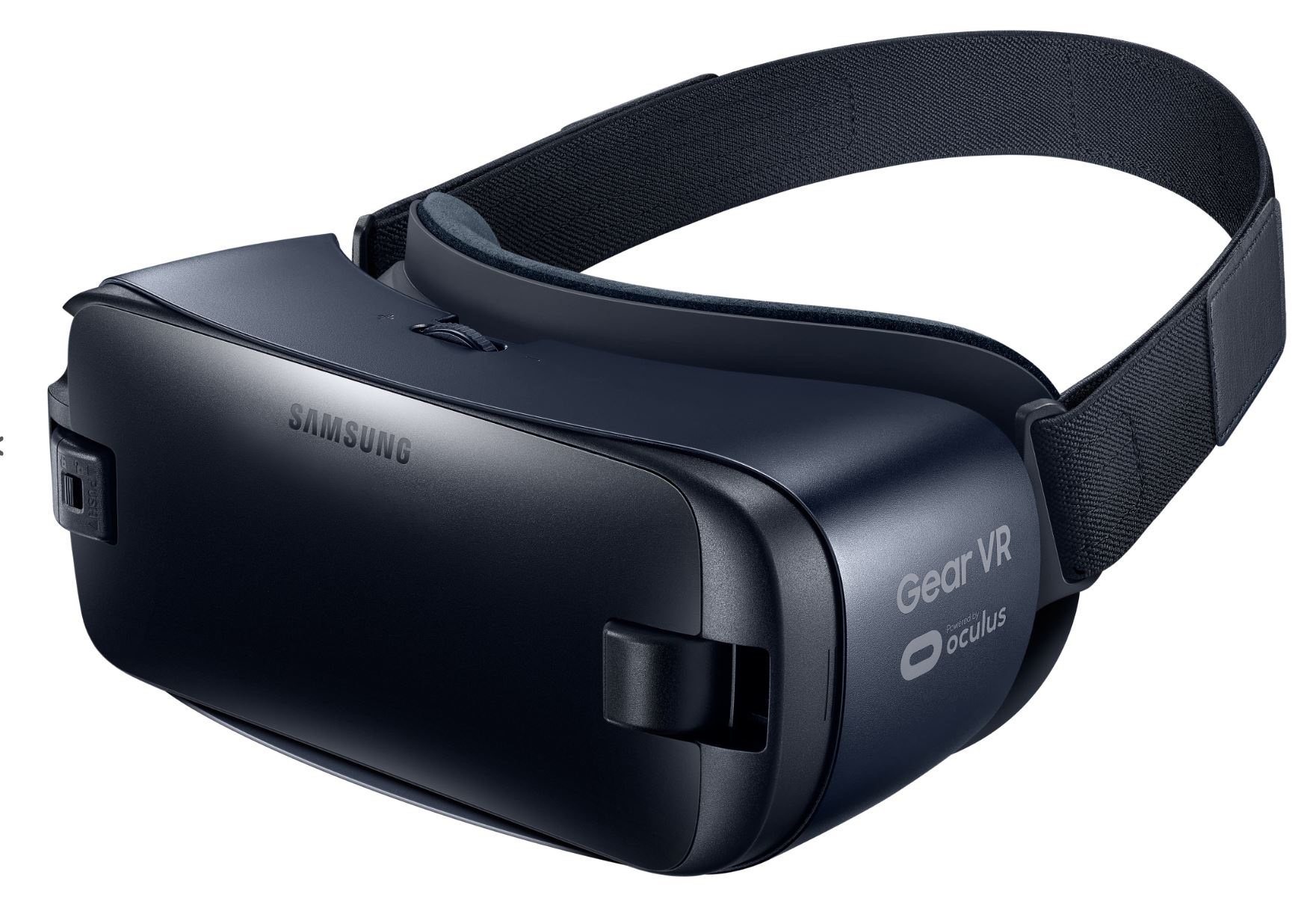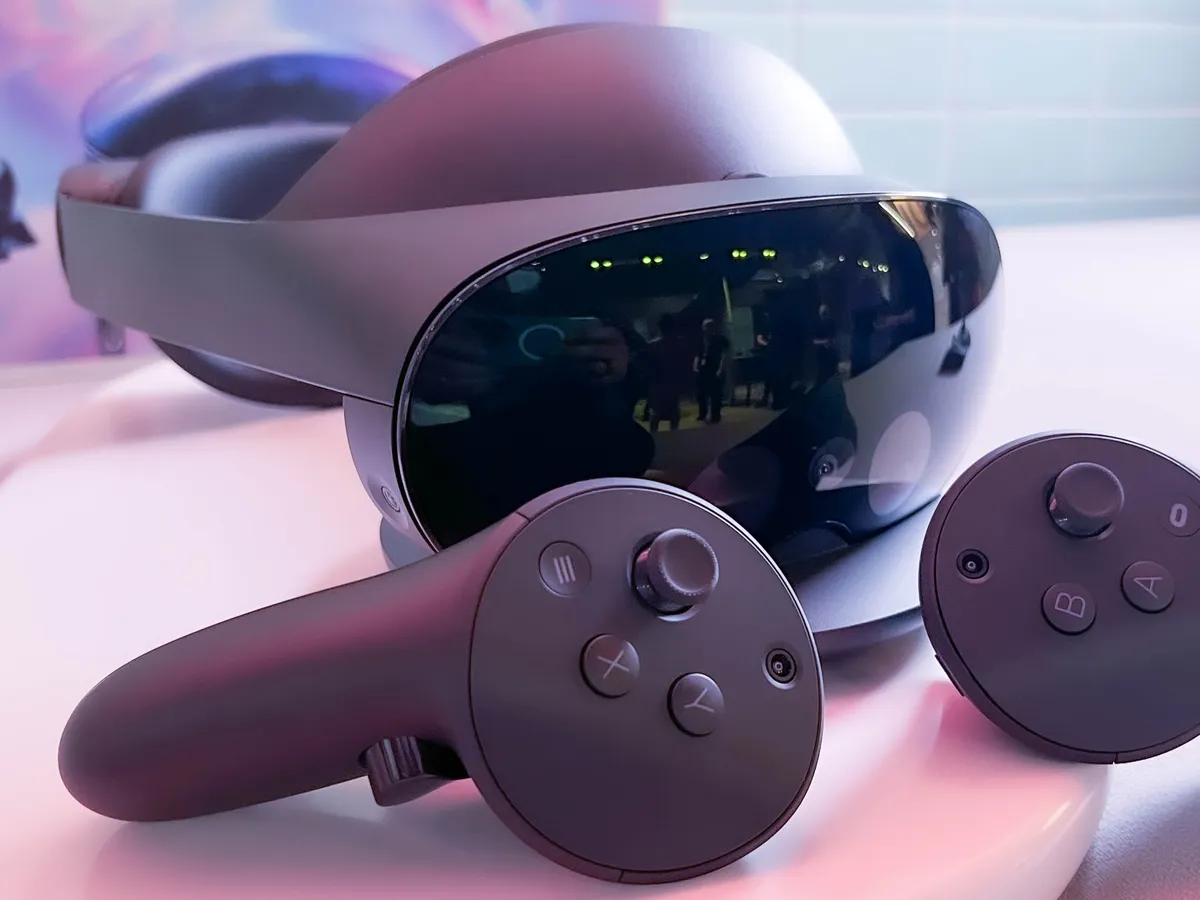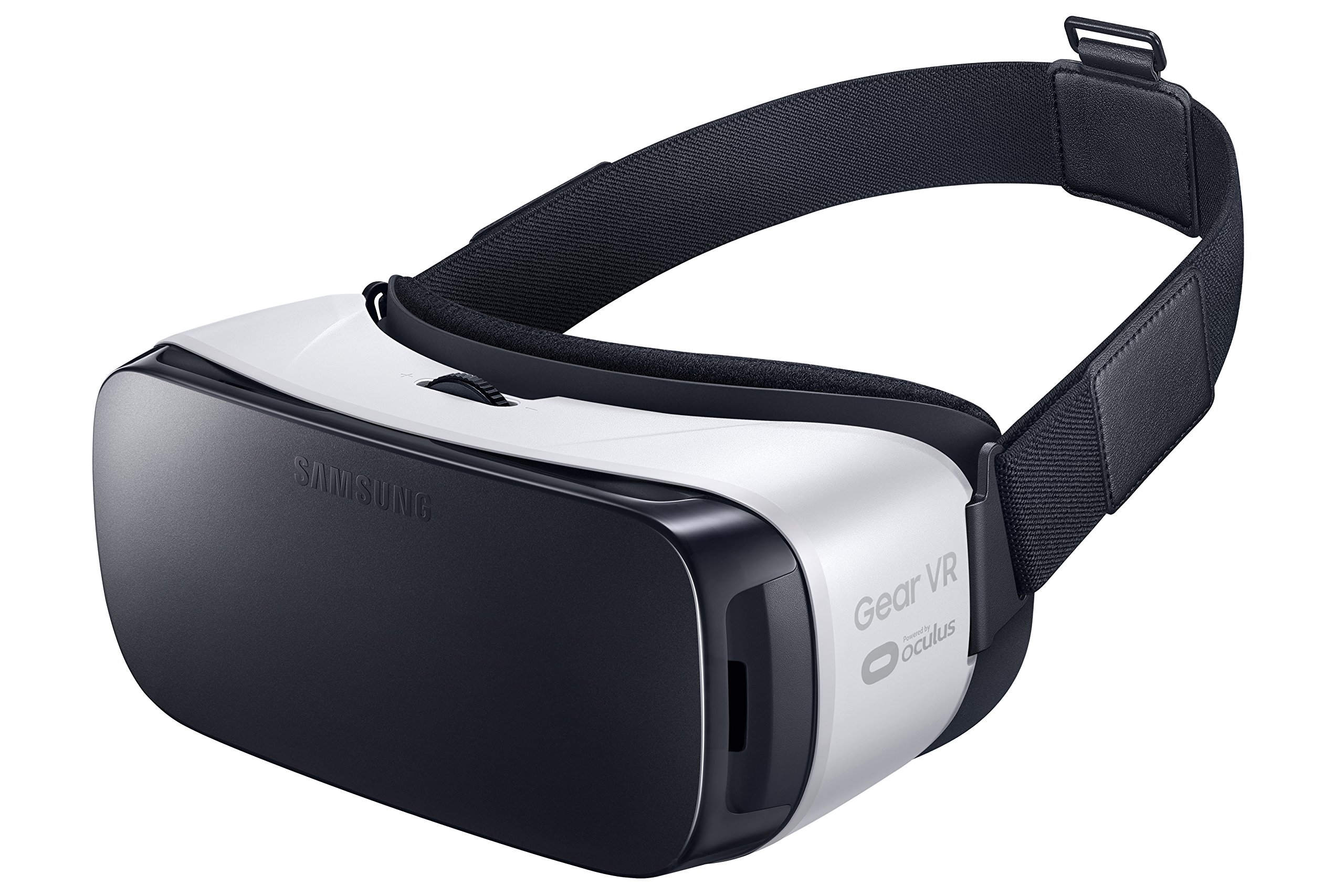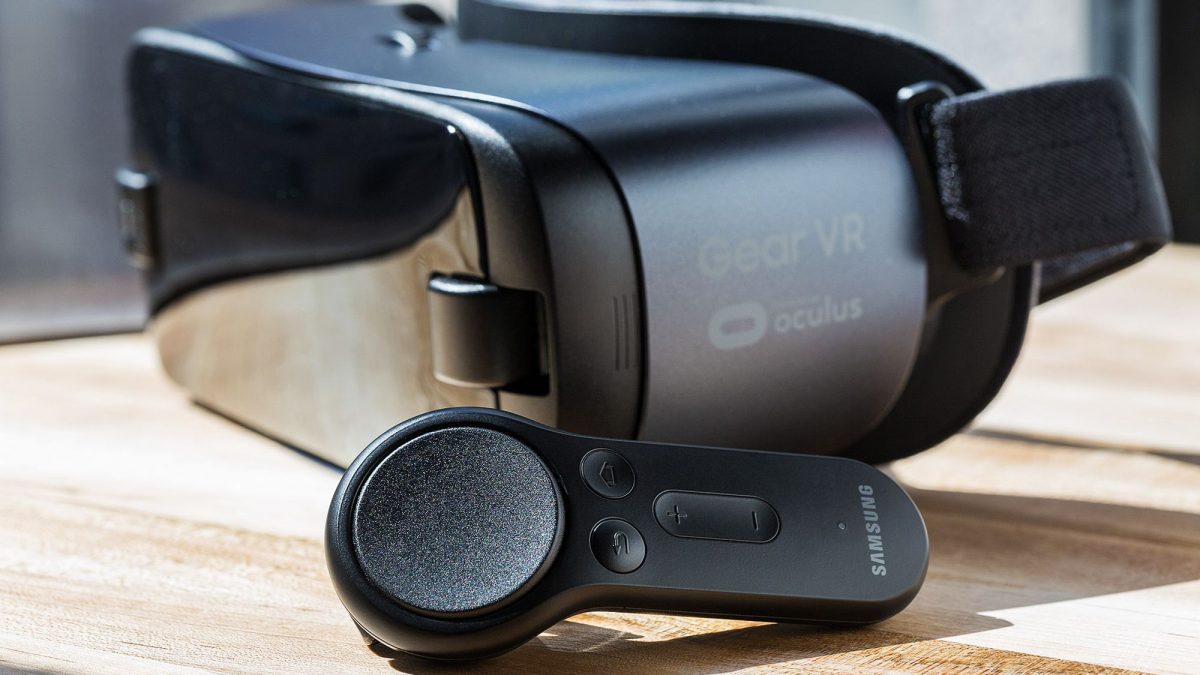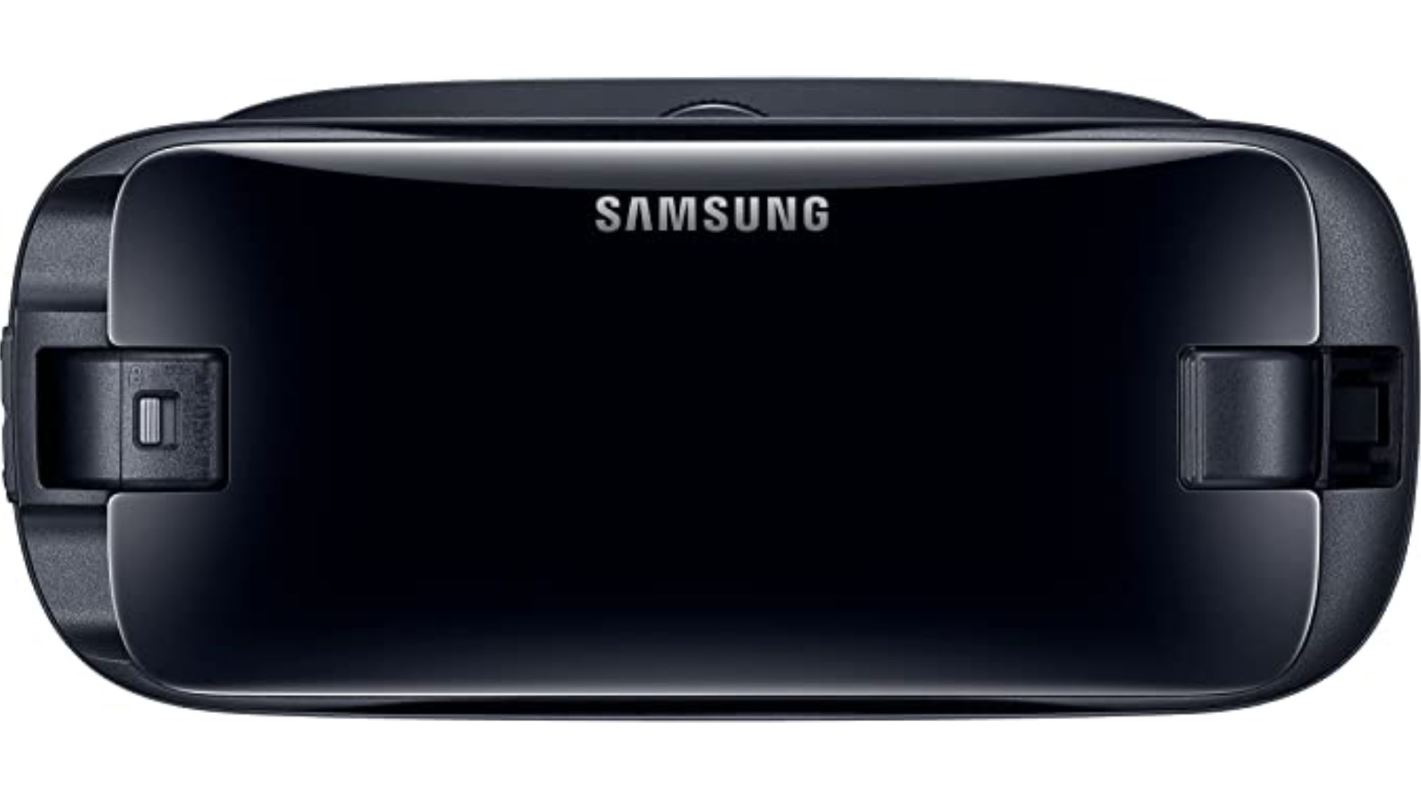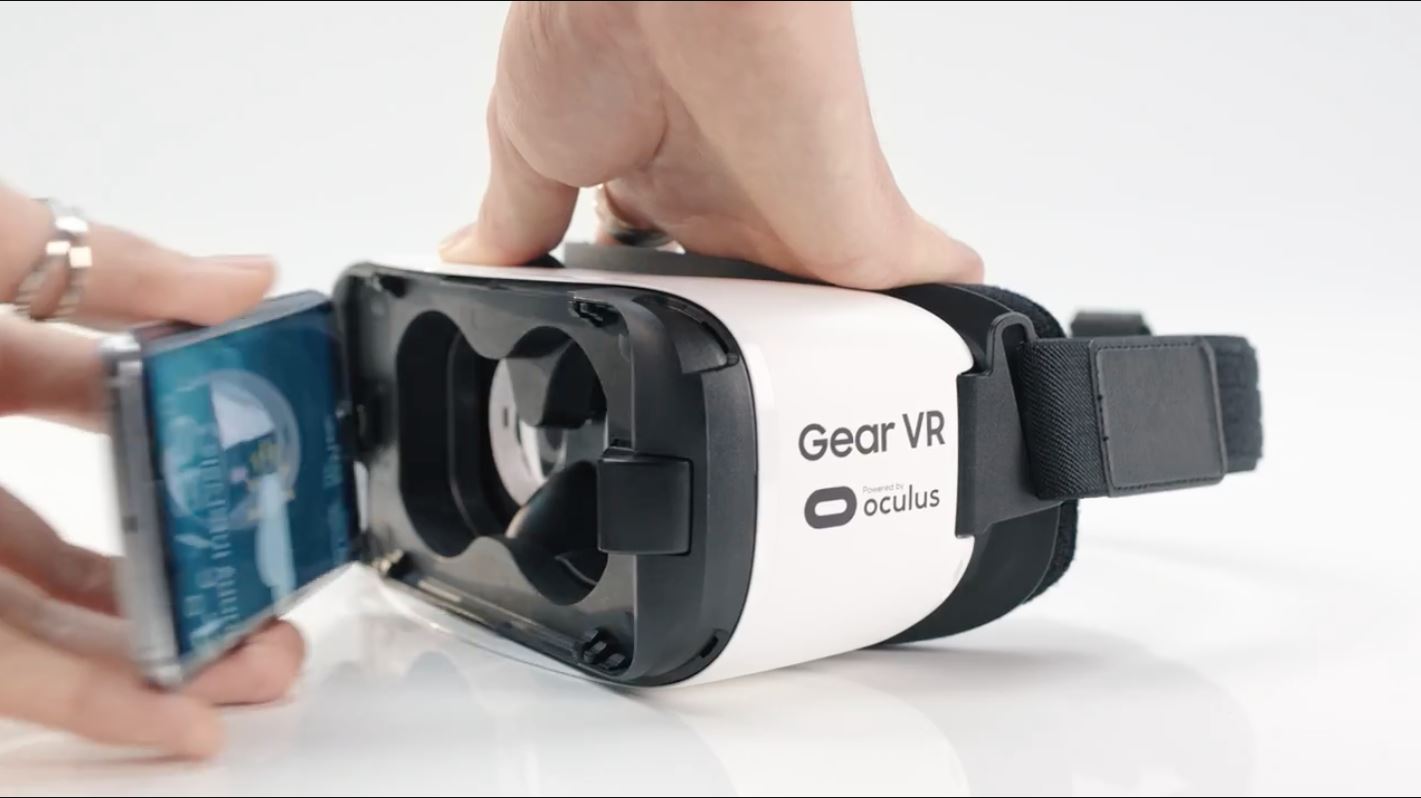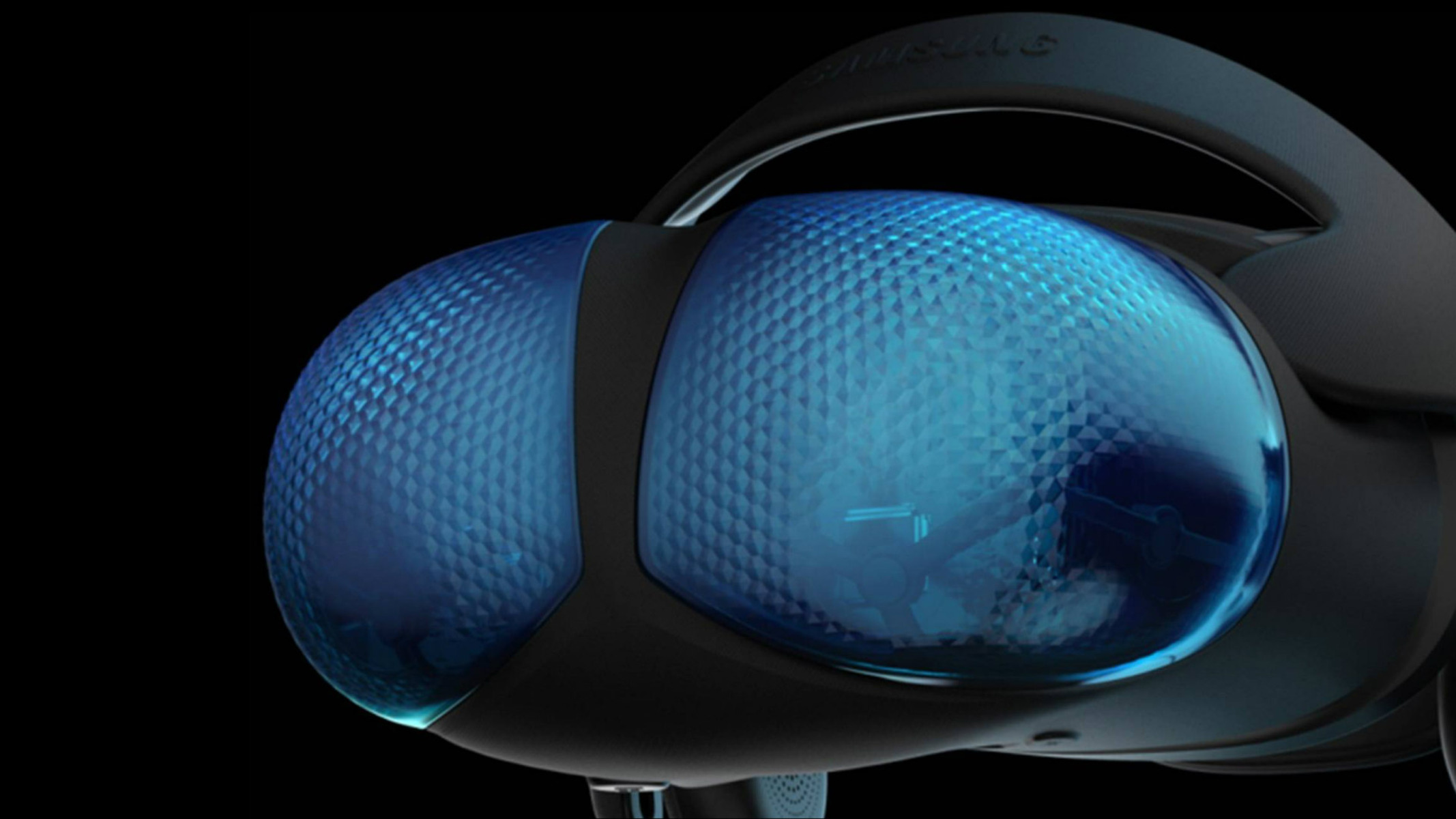Introduction
Welcome to the immersive world of Samsung Virtual Reality (VR). With advancements in technology, virtual reality has become more accessible than ever before. Through the use of various devices and applications, Samsung has emerged as a leading player in the virtual reality market, offering users the opportunity to explore new dimensions and experiences.
Virtual reality is a simulated environment that can be similar to or completely different from the real world. It is designed to provide users with a sense of presence, allowing them to interact with and experience a computer-generated environment in a realistic and immersive way. By wearing VR headsets and using motion tracking devices, users are transported to a virtual world where they can explore, play games, watch videos, and even interact with others in real-time.
Samsung has become a prominent name in the realm of virtual reality with its innovative VR technology and devices. With products like the Samsung Gear VR, the company has revolutionized the way we experience digital content. The Gear VR is a virtual reality headset that works in conjunction with select Samsung smartphones, creating a truly immersive experience.
How does Samsung’s virtual reality technology work? The Gear VR utilizes the high-resolution display and motion sensors of compatible Samsung Galaxy smartphones to provide a lifelike virtual reality experience. By placing the smartphone into the headset, users can enjoy a wide range of virtual reality applications and content, including games, videos, and 360-degree experiences.
One of the key features of Samsung virtual reality is its ease of use. The Gear VR is designed to be comfortable and user-friendly, allowing for extended periods of virtual reality exploration without discomfort. The headset is adjustable, ensuring that it can be customized for each user’s individual comfort and vision needs.
In addition to the Gear VR, Samsung has also introduced the Samsung Odyssey, a premium VR headset that offers a higher level of immersion and realism. This PC-powered headset provides an enhanced virtual reality experience, with improved graphics and tracking capabilities, making it ideal for gaming and other demanding applications.
What is Virtual Reality?
Virtual Reality (VR) is a technology that simulates a computer-generated environment, allowing users to immerse themselves in a virtual world and interact with it. It replicates real-world environments or creates entirely fictional realms, offering a sense of presence and immersion that goes beyond traditional screen-based experiences.
The foundation of virtual reality lies in the concept of creating a digital environment that can be explored and manipulated by users in real-time. By wearing a VR headset, users are transported to a three-dimensional world that is responsive to their movements and interactions. This creates a realistic and immersive experience, blurring the line between the physical and virtual worlds.
To achieve this level of immersion, virtual reality employs a combination of hardware and software components. The core hardware component is the VR headset, which is worn over the eyes and typically includes high-resolution displays that deliver images to each eye, creating a stereoscopic effect. These displays are often accompanied by built-in headphones or speakers to provide spatial audio, further enhancing the sense of presence.
In addition to the headset, virtual reality systems may utilize other hardware devices such as handheld controllers or motion tracking sensors. These devices enable users to interact with and navigate the virtual environment through gestures and movements. By tracking the user’s position and movements in real-time, the system can provide a seamless and immersive experience.
The software aspect of virtual reality encompasses the creation of the virtual environment and the applications that allow users to interact with it. Virtual environments can range from realistic representations of the physical world to fantastical and imaginary realms. Developers use computer graphics, 3D modeling, and animation techniques to build these virtual worlds, carefully considering factors such as visual fidelity, interactivity, and user experience.
Virtual reality has applications in various fields, including gaming, entertainment, education, healthcare, architecture, and training. In gaming, virtual reality allows players to step into the shoes of characters and experience game worlds from a first-person perspective. It creates a heightened level of immersion and engagement, making games more thrilling and immersive than ever before.
Outside of gaming, virtual reality can be used for training and simulation purposes. It provides a safe and controlled environment where individuals can practice complex tasks and learn new skills without real-world consequences. This has proved valuable in industries such as aviation, medicine, and military training, where realistic simulations can be used to prepare individuals for high-stress situations.
Samsung Virtual Reality
Samsung has firmly established itself as a major player in the virtual reality market through its innovative Samsung Virtual Reality (VR) products. With devices like the Samsung Gear VR and Samsung Odyssey, the company offers users a range of options to explore and immerse themselves in the virtual world.
The Samsung Gear VR is a virtual reality headset that works with select Samsung smartphones. By simply attaching a compatible smartphone to the headset, users can step into a world of virtual reality. The Gear VR provides a comfortable and immersive experience, allowing users to enjoy a variety of virtual reality content, including games, videos, and interactive experiences.
With the Gear VR, Samsung has created a platform that fosters creativity and collaboration in the virtual reality space. Developers have the opportunity to create and distribute their own virtual reality apps through the Oculus Store, providing a diverse range of content for Gear VR users to explore. This ecosystem has led to a growing library of virtual reality experiences, ensuring that there is something for everyone’s interests and preferences.
In addition to the Gear VR, Samsung has also introduced the Samsung Odyssey, a premium virtual reality headset targeted towards PC gaming and immersive experiences. The Samsung Odyssey pushes the boundaries of virtual reality with its high-resolution displays, built-in spatial audio, and intuitive controls. It offers a truly immersive experience with a wide field of view, allowing gamers to feel fully immersed in their virtual worlds.
The Samsung Odyssey benefits from partnerships with prominent companies in the gaming industry, providing users with access to a wide range of virtual reality games and experiences. It is compatible with popular gaming platforms, ensuring that gamers can enjoy their favorite titles in virtual reality. With its advanced technology and impressive specifications, the Samsung Odyssey is designed to deliver an unparalleled virtual reality experience.
Samsung’s commitment to virtual reality extends beyond hardware. The company has also developed a range of virtual reality applications and software tools to enhance the virtual reality experience. Through its Samsung XR platform, users can access a vast library of virtual reality and augmented reality content, including videos, documentaries, and immersive experiences from creators all around the world.
As the virtual reality landscape continues to evolve, Samsung remains at the forefront, constantly pushing the boundaries of what is possible. With its range of virtual reality devices and software, the company is dedicated to making virtual reality more accessible and enjoyable for users of all backgrounds and interests.
How Does Samsung Virtual Reality Work?
Samsung Virtual Reality (VR) utilizes a combination of hardware and software components to create an immersive and interactive virtual reality experience. At its core, Samsung’s virtual reality technology relies on the Samsung Gear VR headset and compatible smartphones to deliver a lifelike virtual reality experience.
When using Samsung Gear VR, users simply insert a compatible Samsung Galaxy smartphone into the headset. The smartphone acts as the display and processing unit, while the Gear VR headset provides the optics and tracking capabilities. Once the smartphone is securely attached, the user wears the headset, which covers their eyes and blocks out the surrounding environment.
The Samsung Galaxy smartphone powers the virtual reality experience by leveraging its high-resolution display and motion sensors. The display features a high pixel density, ensuring sharp and detailed visuals. The motion sensors, including accelerometers and gyroscopes, track the user’s head movements, allowing the virtual environment to respond accordingly in real-time.
As users move their heads, the sensors detect the changes in orientation and adjust the displayed visuals accordingly. This creates a sense of presence, making users feel as if they are truly inside the virtual environment. Coupled with the stereoscopic display technology, which provides separate images for each eye, the Gear VR delivers a three-dimensional and immersive experience.
Furthermore, the Gear VR ensures a smooth and comfortable experience through various features. The headset is adjustable, allowing users to customize the fit for maximum comfort and visual clarity. It also features built-in ventilation to prevent overheating and fogging of the lenses. These design elements contribute to an extended and enjoyable virtual reality experience.
In terms of content, Samsung provides users with a vast library of virtual reality apps and experiences. The Oculus Store, accessible through the Gear VR, offers a wide range of applications, games, and multimedia content for users to explore. From immersive gaming experiences to educational content and virtual tours, Samsung’s virtual reality ecosystem caters to a diverse set of interests.
Samsung also collaborates with developers to create innovative virtual reality experiences. The Gear VR development kit provides the tools and resources for developers to build their own virtual reality apps, fostering a vibrant community of content creators. This results in an ever-expanding selection of virtual reality content available for users to enjoy.
Ultimately, Samsung’s virtual reality technology combines the power of smartphones, high-resolution displays, motion sensors, and a vast library of content to deliver an immersive and captivating virtual reality experience. It allows users to explore new worlds, engage with interactive content, and engage in virtual reality gaming, all from the comfort of their own homes.
Features of Samsung Virtual Reality
Samsung Virtual Reality (VR) boasts a range of features that contribute to its immersive and captivating experience. From the Gear VR headset to the software ecosystem, these features ensure that users can fully engage with the virtual world.
High-Quality Displays: Samsung Gear VR utilizes compatible Samsung Galaxy smartphones to provide users with high-resolution displays. This results in sharp, detailed visuals, enhancing the overall immersive experience. The high pixel density ensures that users can enjoy clear and vibrant graphics while exploring virtual environments.
Motion Tracking: The Gear VR headset comes equipped with integrated motion sensors, including accelerometers and gyroscopes. These sensors track the user’s head movements, allowing for intuitive and responsive navigation within the virtual environment. Users can look around, explore their surroundings, and interact with virtual objects by simply moving their heads.
Comfortable Design: Samsung prioritizes user comfort with the design of the Gear VR headset. It features adjustable straps and padding to ensure a secure and comfortable fit for extended periods of use. The headset is lightweight, reducing strain on the user’s head and neck, making it suitable for immersive gaming, watching videos, and other virtual reality experiences.
Wide Field of View: The Gear VR offers a wide field of view, allowing users to fully immerse themselves in the virtual world. With a wider perspective, users can feel a heightened sense of presence and realism, enhancing the overall immersive experience. It expands the visual range, making the virtual environment feel more natural and expansive.
Software Ecosystem: Samsung has partnered with Oculus to create a robust software ecosystem for Samsung VR. Through the Oculus Store, users have access to a diverse range of virtual reality applications, games, and experiences. The store features content from renowned developers, fostering a vibrant community and expanding the available options for users to explore.
Content Creation: Samsung encourages content creation for its virtual reality platform. With the Gear VR development kit and various software tools, developers can create their own virtual reality experiences and distribute them through the Oculus Store. This enables a continuous influx of new and innovative virtual reality content for users to enjoy.
Compatibility: Samsung Virtual Reality is designed to be compatible with a wide range of Samsung Galaxy smartphones. This allows for flexibility and ensures that users with different devices can access virtual reality experiences. Samsung continues to expand device compatibility to include newer models, providing users with a seamless and up-to-date virtual reality experience.
Integration with Samsung Ecosystem: Samsung Virtual Reality integrates seamlessly with other Samsung products and services. Users can easily sync their Samsung accounts and access their existing libraries of media content, including photos, videos, and music, within the virtual reality environment. This integration enhances convenience and allows for a more personalized virtual reality experience.
These features collectively contribute to Samsung Virtual Reality’s immersive experience, making it a compelling choice for users seeking to explore the virtual world and engage with interactive content.
Compatible Devices for Samsung Virtual Reality
Samsung Virtual Reality (VR) offers compatibility with a range of Samsung devices, ensuring accessibility and flexibility for users who want to immerse themselves in the virtual world. While the specific compatibility may vary depending on the model and generation, here are some of the devices commonly compatible with Samsung VR:
- Samsung Galaxy S series: The Samsung Galaxy S series consists of flagship smartphones that are often at the forefront of technological advancements. Models such as the Galaxy S21, Galaxy S20, Galaxy S10, and their respective variants offer compatibility with Samsung VR. These devices boast high-resolution displays and powerful processors, which enhance the overall virtual reality experience.
- Samsung Galaxy Note series: The Samsung Galaxy Note series, known for its large displays and stylus functionality, also provides compatibility with Samsung VR. Devices like the Galaxy Note 20, Galaxy Note 10, and previous generations offer an immersive virtual reality experience, particularly beneficial for creative and productivity-focused applications.
- Samsung Galaxy A series: The Samsung Galaxy A series offers a more affordable range of smartphones without compromising on features and performance. Models like the Galaxy A71, Galaxy A51, and other variants provide access to Samsung VR, allowing users to enjoy virtual reality experiences without breaking the bank.
- Samsung Galaxy Fold and Flip: Samsung’s innovative and unique foldable devices, such as the Galaxy Fold and Galaxy Z Flip, provide compatibility with Samsung VR. These devices offer a larger screen real estate when unfolded, creating an immersive and visually stunning virtual reality experience.
- Samsung Galaxy Tab series: Samsung Virtual Reality is not limited to smartphones alone. Some tablets from the Samsung Galaxy Tab series, like the Galaxy Tab S7, Tab S6, and Tab S5e, are compatible with Samsung VR. These tablets offer larger screens and increased processing power, enhancing the virtual reality experience and making it more enjoyable for content consumption.
- Samsung Odyssey: While not a smartphone, the Samsung Odyssey is a premium virtual reality headset designed specifically for PC gaming and immersive experiences. It provides compatibility with high-end gaming PCs, leveraging their powerful hardware to deliver an exceptional virtual reality experience with realistic graphics and immersive gameplay.
It’s worth noting that the compatibility of specific devices with Samsung VR can depend on factors such as the device’s specifications, software updates, and the required Samsung VR app version. It’s recommended to check the official Samsung VR website or the Samsung Galaxy Store for the most up-to-date information on compatible devices.
By offering compatibility with a wide range of Samsung devices, Samsung Virtual Reality ensures that users have options to suit their preferences, budget, and device type. Whether it’s a flagship smartphone, a mid-range device, or a PC-powered headset, Samsung VR strives to provide an immersive virtual reality experience to as many users as possible.
Popular Samsung Virtual Reality Apps
Samsung Virtual Reality (VR) offers a diverse range of applications that cater to different interests and provide engaging and immersive experiences in the virtual world. Here are some popular Samsung VR apps that have captured the attention of users:
- Oculus TV: Oculus TV is a virtual reality app that allows users to stream a variety of content in a virtual cinema-like setting. Users can enjoy their favorite shows, movies, and videos from popular streaming platforms like Netflix, Hulu, and YouTube VR, giving them a unique and immersive viewing experience.
- VRChat: VRChat is a social platform where users can interact with others from around the world in virtual reality. Users can create their own avatars, explore virtual worlds, attend virtual events, and engage in real-time conversations with other VRChat users. This app offers a dynamic and social experience, providing a sense of connection in a virtual environment.
- Samsung VR Videos: Samsung VR Videos is a dedicated app that offers a wide range of virtual reality content, including short films, documentaries, music videos, and more. Users can explore different genres and themes, diving into immersive experiences that go beyond traditional video content.
- Netflix VR: Netflix VR takes the popular streaming service and immerses users in a virtual reality environment where they can watch their favorite TV shows and movies on a virtual big screen. With the ability to adjust the size and position of the screen, users can have a personalized and cinematic viewing experience from the comfort of their own virtual reality environment.
- End Space VR: End Space VR is a thrilling space combat game that puts users in control of a spaceship as they navigate through dangerous battles against enemy ships. With stunning graphics and immersive gameplay, End Space VR provides an adrenaline-pumping experience for fans of space exploration and combat.
- Keep Talking and Nobody Explodes: Keep Talking and Nobody Explodes is a multiplayer puzzle game that challenges players to work together to defuse a virtual bomb. One player wears the Gear VR headset and views the bomb, while others refer to a physical manual to provide instructions. Communication and teamwork are crucial, making this game a fun and interactive experience.
- The Climb: The Climb is a virtual reality game that takes players on a breathtaking rock climbing adventure. With realistic graphics and intuitive controls, players can conquer towering cliffs and experience the thrill of scaling new heights. The Climb showcases the immersive potential of Samsung VR in offering thrilling and visually stunning gaming experiences.
These are just a few examples of popular Samsung VR apps, and the selection continues to grow as developers create innovative and engaging content. From immersive video experiences to social platforms and thrilling games, Samsung VR apps provide a diverse range of entertainment possibilities for virtual reality enthusiasts.
When exploring the Samsung VR app library, users can discover numerous other applications that cater to their specific interests, whether it’s educational experiences, virtual tourism, meditation, or immersive storytelling. With the expanding selection of apps, Samsung VR aims to provide something for everyone, making virtual reality an engaging and captivating pursuit.
Benefits of Samsung Virtual Reality
Samsung Virtual Reality (VR) offers a range of benefits that enhance the user experience and provide unique opportunities for entertainment, education, and more. From immersive gaming experiences to virtual travel and skill development, here are some key benefits of Samsung VR:
- Immersive Entertainment: Samsung VR transports users to a virtual world, offering a level of immersion and engagement that traditional media cannot replicate. Whether it’s watching movies, playing games, or exploring virtual environments, Samsung VR provides a heightened sense of presence and excitement, making entertainment more captivating and memorable.
- Virtual Travel and Exploration: With Samsung VR, users can embark on virtual tours of iconic landmarks, travel to distant destinations, and explore breathtaking landscapes without leaving their home. This opens up possibilities for those who may be unable to travel physically, providing them with a virtual alternative to satisfy their curiosity and wanderlust.
- Virtual Training and Skill Development: Samsung VR has proven to be a valuable tool for training and skill development across various industries. From medical simulations to aviation or military training, virtual reality offers a safe and controlled environment for individuals to practice and refine their skills without real-world risks. This potential for immersive and realistic training can greatly enhance learning outcomes.
- Enhanced Visualization and Problem-Solving: Virtual reality can assist in visualizing complex concepts and problems. Whether it’s architectural designs, engineering simulations, or data visualization, Samsung VR allows users to immerse themselves in three-dimensional environments to gain a better understanding of abstract ideas and collaborate with others in a virtual space.
- Therapeutic and Rehabilitation Benefits: Virtual reality has been utilized in therapeutic contexts, such as pain management, anxiety reduction, and rehabilitation. By creating immersive and interactive environments, Samsung VR can distract and engage individuals, potentially reducing pain perception and anxiety levels. It can also aid in the rehabilitation process by providing a safe and motivating space for exercises and simulations.
- Enhanced Gaming Experiences: Samsung VR takes gaming to the next level by placing users in the center of the action. With virtual reality, gamers can experience a greater sense of presence and realism as they interact with virtual environments and characters. This immersive experience adds depth and excitement to gameplay, enhancing overall immersion and enjoyment.
- Inclusive Accessibility: Samsung VR aims to be inclusive and accessible to a wide range of users. With adjustable headsets, compatibility with multiple Samsung devices, and a growing library of content, Samsung VR provides opportunities for people of different ages and abilities to engage with virtual reality experiences, fostering a more inclusive and diverse digital landscape.
As virtual reality technology continues to advance, the benefits of Samsung VR are expanding. Whether it’s entertainment, education, training, or therapeutic use cases, Samsung VR offers a platform for immersive and engaging experiences that have the potential to transform various aspects of our lives.
Limitations of Samsung Virtual Reality
While Samsung Virtual Reality (VR) offers numerous benefits, there are also certain limitations that users should be aware of. Understanding these limitations can help manage expectations and make informed decisions about the use of Samsung VR technology. Here are some key limitations to consider:
- Hardware Requirements: Samsung VR relies on compatible smartphones or dedicated headsets to deliver the virtual reality experience. However, not all Samsung devices are compatible, and users may need to upgrade their devices to ensure compatibility with the latest virtual reality applications. This can incur additional costs for users who do not already own compatible devices.
- Graphic Fidelity: Due to the reliance on smartphones as the display and processing unit, graphic fidelity in Samsung VR may not match that of high-end PC-powered virtual reality systems. While Samsung devices offer impressive displays, they may not provide the same level of visual fidelity and realism as dedicated VR systems that have dedicated GPUs.
- Field of View: The field of view in Samsung VR headsets may be limited compared to higher-end VR systems. While it still provides an immersive experience, users may notice some restrictions in their peripheral vision, reducing the feeling of complete immersion in the virtual world.
- Motion Sickness: Some users may experience motion sickness or discomfort when using Samsung VR. Virtual reality relies on sensory inputs to create the illusion of movement, which can conflict with the user’s vestibular system and lead to motion sickness symptoms. To mitigate this, users should take breaks, gradually acclimate to the virtual environment, and choose experiences that suit their comfort levels.
- Physical Limitations: The use of Samsung VR may require physical movements, such as head or body rotations, which can be challenging for users with mobility limitations or disabilities. Additionally, wearing the headset for extended periods of time may cause discomfort for some users, especially for those with certain medical conditions or sensory sensitivities.
- Isolation: Using Samsung VR can be an isolating experience as users may become fully immersed in the virtual world, disconnecting from the physical environment and people around them. This isolation may limit social interactions and hinder the ability to engage in activities that require real-world interactions and collaboration.
- Content Availability: Although Samsung VR offers a growing library of virtual reality content, the availability of specific applications and experiences may vary. Some niche or specialized content may be limited, and not all virtual reality apps are compatible with all Samsung devices. Users should research and ensure that their preferred content is available for their specific Samsung VR device before making a purchase.
It is important for users to be aware of these limitations and consider them within their specific needs and expectations. While Samsung VR technology continues to evolve and improve, these limitations are inherent to the current state of virtual reality technology and should be taken into account when using Samsung VR.
Future of Samsung Virtual Reality
The future of Samsung Virtual Reality (VR) holds great potential as the technology continues to advance and evolve. Samsung, as a major player in the VR industry, is well-positioned to lead the way in shaping the future of virtual reality experiences. Here are some key aspects that may define the future of Samsung VR:
- Advancements in Hardware: As technology progresses, we can expect Samsung to develop more advanced VR hardware, including higher-resolution displays, improved field of view, and enhanced motion tracking capabilities. These advancements will contribute to a more immersive and realistic virtual reality experience on Samsung devices.
- Integration with 5G Technology: The deployment of 5G networks will significantly impact the future of Samsung VR. The increased bandwidth and reduced latency offered by 5G will enable high-quality streaming of virtual reality content, better multiplayer experiences, and more seamless interactions. This integration will push the boundaries of what is possible in terms of collaborative virtual reality environments and real-time social interactions.
- Wireless and Standalone VR: Samsung is likely to explore the development of wireless or standalone VR headsets, eliminating the need for a smartphone connection. Standalone headsets would integrate display, processing, and tracking capabilities within the device itself, providing more freedom of movement and accessibility for users without relying on a separate device.
- Expanded Virtual Reality Ecosystem: Samsung will continue to build upon its virtual reality ecosystem, collaborating with developers and creators to expand the range of virtual reality experiences available. We can expect to see a greater variety of entertainment content, educational applications, and productivity tools, catering to a broader range of user interests and needs.
- Improved Content Creation Tools: Samsung is likely to develop more user-friendly content creation tools that empower creators to design and develop their own virtual reality experiences. This will encourage a greater diversity of content and stimulate innovation within the virtual reality community.
- Integration with Augmented Reality (AR): While Samsung VR primarily focuses on virtual reality, we may see increased integration with augmented reality (AR) technology. Samsung may explore the development of devices, platforms, and applications that combine virtual reality with the real world, creating more seamless and immersive mixed reality experiences.
- Enterprise and Industrial Applications: The future of Samsung VR extends beyond consumer applications. Virtual reality has significant potential in enterprise and industrial sectors for training, collaboration, and visualization purposes. Samsung is likely to adapt its VR technology to cater to these specific industries, providing innovative solutions for businesses and organizations.
The future of Samsung VR is driven by technological advancements, user demands, and industry developments. Samsung’s commitment to virtual reality, combined with its technological expertise and extensive resources, positions the company to be a major influencer in shaping the future landscape of virtual reality experiences.
Conclusion
Samsung Virtual Reality (VR) offers a gateway to immersive and captivating experiences in the virtual world. With its range of devices, including the Samsung Gear VR and Samsung Odyssey, Samsung has established itself as a key player in the virtual reality arena. Whether it’s gaming, entertainment, education, or training, Samsung VR provides users with a myriad of opportunities to explore new dimensions and engage with interactive content.
The features of Samsung VR, such as high-quality displays, motion tracking, and user-friendly design, contribute to a comfortable and seamless virtual reality experience. The expanding library of Samsung VR apps allows users to discover a wealth of content, from virtual tours of iconic landmarks to thrilling gaming experiences that push the boundaries of immersion.
While Samsung VR offers numerous benefits, it is important to recognize its limitations, such as graphic fidelity and potential for motion sickness. Understanding these limitations can help users manage their expectations and make informed decisions about using Samsung VR technology.
The future of Samsung VR holds great promise as advancements in hardware, integration with 5G technology, and expanded content creation tools propel the technology forward. Samsung’s dedication to building a robust virtual reality ecosystem and exploring new frontiers, such as wireless and standalone VR, ensures that users will continue to have access to cutting-edge virtual reality experiences.
In conclusion, Samsung VR opens up a world of possibilities, allowing users to escape the constraints of reality and venture into virtual realms. From entertainment to education, training to exploration, Samsung VR fuels our imagination and provides a glimpse of what the future of virtual reality holds.







